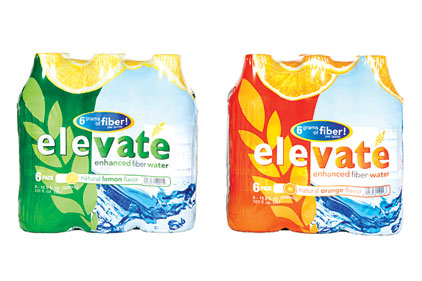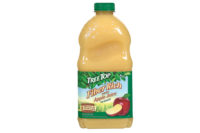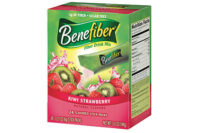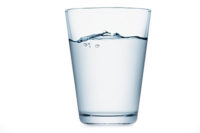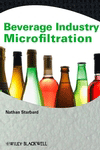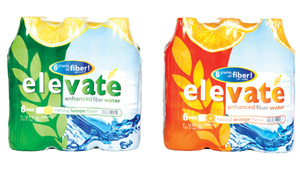
|
In a broad sense, You’ve probably heard fiber categorized as insoluble and soluble, but the classifications are even more complex. Fiber can be subcategorized in a number of ways including by viscosity, fermentability, physiological effect, source or chemical structure. Understanding fiber through these various lenses is the key to producing products that can speak to today’s consumers, experts note.
Simply put, dietary fibers are indigestible plant carbohydrates. The terms insoluble and soluble refer to the fiber’s ability to dissolve in water, but also hint at the different functions of these fibers. Insoluble fiber is known for its ability to move through the gastrointestinal (GI) tract, provide bulk and regulate bowel activity, whereas soluble fibers absorb water and can become gelatinous, slowing the movement of food through the digestive tract. Prebiotic soluble fibers can be fermented in the colon by the normal bacteria that live in the gut and provide digestive, immune and bone health benefits.
Newer soluble fiber ingredients such as inulin and oligofructose are non-viscous and sometimes are referred to as invisible for their clear and tasteless characteristics. Soluble fiber ingredients are the most relevant to today’s beverage market because their non- or low-viscous properties mean that lighter drinks, such as juices and waters, are now possible to fortify, suppliers explain. Commercially produced soluble fibers like psyllium, beta-glucan and pectins have been available for many years, and generally work well in applications with plenty of texture and body, suppliers say.
A variety of low molecular carbohydrates are increasingly used in food processing, the Academy of Nutrition and Dietetics reports. These include resistant starch, polydextrose, and non-digestible oligosaccharides including fructo-oligosaccharides (FOS) and galacto-oligosaccharides (GOS). Resistant starch can be used as a functional fiber and, in fact, is oftentimes categorized as a dietary fiber because it is not digested in the small intestine.
Fibers originate from a wide variety of sources including wheat, corn and chicory root, so they can be categorized by origin but also by their chemical structure, such as non-starch polysaccharide (NSP), oligosaccharide, synthetic carbohydrate or non-resistant starch.
New low-viscous soluble fibers present an opportunity for fiber fortification, not just in terms of new beverage formats and applications, but also in terms of offering a wider array of health benefits, which could set these fibers apart from their traditional counterparts.
Beverage applications
With novel fiber ingredients at their fingertips and strong demand in the marketplace, beverage formulators are poised to develop creative drinks that get consumers excited about upping their fiber intake.
Santa Monica, Calif.-based Nutrition Innovation provides product formulation, marketing and regulatory support for the dietary supplement and functional beverage industry. Alan Roberts, chief executive officer and founder of Nutrition Innovation, says that with so many new fibers now accessible to developers, he finds himself at the intersection of fiber enrichment, where many players are seeing the opportunity for what was once a very niche market.
“What’s happening in our industry is that there’s a lot of overlap, because functional food manufacturers want to give value-added propositions to their consumers, and the supplement companies want to have products outside of just pills and capsules, so they are looking to beverages,“ he says.
Fiber formulation can pose many challenges, such as an unwanted effect on mouthfeel and texture, the presence of off-flavors, issues with digestive tolerance, or degradation of the fiber content due to hydrolyzation under high heat processing or acidic conditions.
The biggest challenge in formulation, Roberts says, is “trying to fit a high amount of fiber into a serving. Depending on the fiber source, it can change the consistency or the organoleptic profile of the beverage.”
Janae Kuc, senior research and development scientist at Gum Technology Corp., Tucson, Ariz., agrees saying: “High amounts of fiber tend to make beverages chalky. The most prevalent challenge to formulating a fiber-enriched beverage is providing a favorable texture while incorporating enough soluble and insoluble fiber into the system to meet a high fiber claim.”
Roberts says the choice of fiber comes down to the format of the product and the claim the manufacturer wants to make in order to create a marketable product. One thing is for sure, he says, “With formulation, it’s got to be cost effective.”
Before technological advances were mastered in extracting, purifying and producing soluble fibers, formulators wanting to enrich food products were limited mostly to insoluble fibers, such as cellulose, that boosted the dietary fiber content in grain-based products.
Viscous soluble fibers, such as psyllium, some gums, beta-glucan and pectins, have been commercially available for some time; although they do provide a fiber boost in products, in beverage applications oftentimes their viscous nature means that they are primarily used in drinks that require some additional body or texture, suppliers say.
A number of inexpensive, low- and non-viscous fiber ingredients have been developed in the last decade due to extensive fiber research and technical advancement, which has opened doors for beverage formulators who previously thought lighter, clearer beverage applications were off limits when it came to fortification.
First identified and named in 1995, prebiotics are a type of soluble fiber that nourish the good bacteria that live in the digestive system. They are poorly digested by the upper GI tract and remain intact until they reach the large bowel, where they are fermented by the colon and stimulate the growth of beneficial bacteria, such as bifidobacteria and lactobacilli, and serve many important functions including helping to support the immune system and digestive tract.
A number of positive effects are associated with prebiotics, including the enhancement of mineral absorption and support for overall health. Many fibers including GOS also are fermentable to a certain extent, though the most prevalent forms discussed in the industry today are inulin and oligosaccharides.
The newer non-viscous, invisible soluble fibers not only have implications for color and texture, but their effect on health claims is important, too. They can be added to beverages at levels high enough for fiber claims without detection by consumers, and they also bring with them an entirely new set of health benefits that manufacturers can use to market the products, according to suppliers.
Inulin and oligosaccharides
Inulin and oligosaccharides, which are part of inulin and sometimes referred to as FOS or scFOS for the short-chain form, are the most common of these invisible fibers. Often sourced from chicory or Jerusalem artichoke, these fibers are fermented in the colon, and are commonly added to yogurts and dairy beverages that contain active cultures to increase the digestive benefits through their prebiotic nature.
Inulin has implications for bone health and weight loss as it has been proven to aid in the absorption of calcium and in appetite control.
Beneo carries two fibers derived from chicory root in its portfolio: oligofructose and inulin, says Rudy Wouters, vice president of the Beneo-Technology Centre. Both are soluble fibers, although the oligofructose is considered more soluble, he notes. Their flexibility in terms of function, he says, make the fibers valuable ingredients.
Inulin can be used to improve the body and mouthfeel of low-fat products to deliver a creaminess in the product, which is why, in part, it is commonly used in dairy applications.
The company’s inulin also can be used in non-dairy applications that benefit from reduced sugar and an improved mouthfeel such as a high-fiber, reduced-calorie dry mix drink. For example, Beneo’s Orafti GR, an ingredient made with 92 percent granulated inulin and containing about 8 percent glucose, fructose or sucrose, can be added to this type of formulation at about
1.14 percent. In this example, sucrose is the only ingredient that would require adjustment due to the added inulin, reduced from about 3.7 percent to 2.5 percent, according to the company. The granulated inulin has a good dispersibility and can improve dispersibility of the overall mix. The company’s gel form, Orasti ST Gel, could be a viable substitution for the granulated form in some applications, the company says.
Beneo’s oligofructose is available in liquid or powder form, and with its moderately sweet taste also can be used as a natural sugar replacer, it notes. Oligofructose is more soluble than sucrose and is known to eliminate, in part, the artificial aftertaste associated with some high-intensity sweeteners, according to Beneo. The company says that certain fruit flavors also are more pronounced when used in combination with oligofructose. The product is easy to use in regard to fiber enrichment, the company notes. For an enriched apple juice, for example, Orafti L95, a liquid ingredient with an oligofructose content of 95 percent, could be added at just 1 percent, followed by flash pasteurization and refrigeration.
Both inulin and oligofructose are considered easy to use in most applications. Deborah Schulz, product manager for Minneapolis-based Cargill Health & Nutrition, agrees that inulin is especially popular for its adaptable applications. Schulz stresses that fiber’s multi-functional use in formulation, which includes acting as a fat mimetic, bulking agent and masking agent, are what make it so great to work with.
Inulin is used a lot in replacing calories, she explains, and also can be used to aid the mouthfeel and replace the texture lost when sugar is removed, without contributing calories. A common practice of using a high-intensity sweetener in combination with inulin provides a double benefit of adding fiber and improving mouthfeel, she says.
One of the things about inulin that’s so remarkable is that “if you stir it into water, it still looks like water,” Schulz says. On the flip side, she explains, one of the challenges specifically for inulin is that if you are formulating something with a low pH, like a canned juice beverage, the fiber is susceptible to breakdown by the low pH and the acid in the system, which needs to be accounted for.
The company’s line of inulin comes in a variety of chain lengths, which designates the degrees of polymerization. Native inulin, such as Cargill’s Oliggo-Fiber Instant inulin, can be easily incorporated in beverages such as meal replacements, dairy-based beverages and dry mixes; whereas a shorter chain inulin, such as Oliggo-Fiber F97 oligofructose, can be used for delivering fiber for clear beverages due to its higher solubility, the company says.
Cargill’s Oliggo-Fiber inulin products have caloric values ranging from 1.1 to 1.3 calories per gram, which is in comparison to general carbohydrates with 4 calories per gram, it notes. The company’s inulin is made of chicory root, so the ingredient can appear on a label under a variety of names, from inulin or vegetable fiber to fructo-oligosaccharide to chicory fiber.
‘Stealth’ fibers
Fibers besides inulin also have what’s come to be known as stealth formulation properties due to their low viscosities. Cargill’s Barliv barley betafiber is invisible when added to beverages and thus can be applied to clear beverages, according to the company. It is a concentrated, 70 percent pure source of barley beta-glucan, which is a natural soluble fiber found in certain cereal grains, including barley and oats. Similar to oats, it is shown to lower low-density lipoprotein (LDL) cholesterol and is an authorized source of soluble fiber for a U.S. Food and Drug Administration health claim for reducing the risk of heart disease, Cargill notes.
Barliv can be used in a variety of applications, from carbonated beverages to energy drinks to dairy. As an example in a juice application, only 0.45 percent of barley betafiber is needed in order to deliver 0.75 grams of betafiber in an 8-ounce serving. Similar to inulin and oligofructose, betafiber also can be used to add viscosity and a creamy mouthfeel, though it also can be used for moisture control, the company says. For beverage applications, Cargill recommends premixing the betafiber with other dry ingredients for effective dispersion and/or pre-blending it in vegetable oil, corn syrup or another non-solvent to effectively hydrate the ingredient.
Another invisible fiber with interesting health benefits is larch arabinogalactan. Lonza Inc., Allendale, N.J., offers the fiber in the form of ResistAid, a proprietary “natural immune support ingredient” produced from larch trees that, according to the company, has been shown to display an array of immune health benefits. ResistAid consists of the soluble polysaccharide arabinogalactan and bioactive flavonoids with antioxidant properties. Its highly branched structure makes it very soluble in hot or cold water, the company says. ResistAid is stable in a wide range of temperatures and pH levels and is self-affirmed generally recognized as safe (GRAS) and approved as a direct food additive.
A variety of wheat and corn dextrins also are being used in beverages for their tasteless, odorless, non-viscous properties.
Decatur, Ill.-based Archer Daniels Midland Co. (ADM) and Japan-based Matsutani market Fibersol-2, a digestion-resistant maltodextrin. This soluble corn fiber is offered in the form of a spray-dried powder that is soluble up to 70 percent and is readily dispersible in water, meaning it produces a totally soluble, clear solution, the company says. Fibersol-2 has no inherent flavor, and can be used up to 10 grams in any given beverage, including juices, coffees, teas, protein drinks, soy beverages and beverages with high-intensity sweeteners, the company says. The product is acid, heat and retort stable.
Fibersol-2 contains 1.6 kilocalories per gram of carbohydrates and 0.2 grams of sugars per 10 grams, so it can be used in products with no added sugar, the company says. Depending on the beverage application, Fibersol-2 can be used multifunctionally to provide flavor and texture balance to the product, the company says. For example, in a juice application, the addition of the fiber could mask acidic notes, provide a smoother taste and reduce bitterness of citrus notes.
The fiber also can be used in a dry blend for individual serving stick packs, as the company has demonstrated in a prototype. One stick pack can contain about 5.6 grams of Fibersol-2, which provides 5 grams of dietary fiber and meets the requirements for an “excellent source” claim. According to the company, in a dry beverage mix Fibersol-2 can be dry-blended with powdered flavor, acidulant, high-intensity sweetener and/or sugar, and other ingredients. The ingredient is able to readily dissolve in water when mixed thoroughly, the company explains.
ADM notes that formulating fiber-enriched beverages can pose many different challenges, including the possible hydrolyzation of fiber under high heat processing and acidic conditions, which causes a loss of fiber content. Heat- and acid-stable ingredients like Fibersol-2 are not limited by this issue, which has implications for extended shelf-life stability, the company says.
The companies also offer Fibersol-LQ corn syrup, a soluble corn fiber that can be used to add sweetness and humectancy to a product.
Decatur, Ill.-based Corn Products International, which also owns National Starch Food Innovation, Bridgewater, N.J., distributes a range of clean-tasting, instantly dispersible soluble fibers manufactured by Roquette and marketed under the brand Nutriose. These wheat and corn dextrins have a high fiber content of up to 85 percent, and sugar as low as 0.5 percent.
Santiago Vega, the company’s senior manager of nutrition marketing, says the Nutriose line is one of the most resilient fibers in its portfolio for a range of applications within beverages. “I think that [Nutriose ingredients] are a very good option in terms of overall flexibility and versatility in terms of usage as it relates to beverage,” he says.
The agglomerated form of Nutriose dissolves quickly and disperses instantly, making it a good option for beverages such as juices, soft drinks and flavored waters, the company says. A combination of high solubility, low viscosity and excellent digestive tolerance means it can be used at high levels. Because it is acid stable in pH 2.5 to 7, it can be used in acidic products, such as soft drinks, and in products that require a long shelf life without danger of fiber degradation, it adds.
Decatur-Ill.-based Tate & Lyle also offers a soluble corn fiber under the Promitor brand name. The ingredient is available in dry or liquid forms and in 70 or 85 percent fiber. It can be labeled as “soluble corn fiber” or “maltodextrin,” and the powder form dissolves easily and remains clear in beverages. Promitor Soluble Corn Fiber 85 is a good choice for a high fiber, low sugar (meaning less than 2 percent sweetener) application with prebiotic properties.
Galacto-oligosaccharides
GOS are prebiotic, naturally occurring oligosaccharides found in human milk and traditionally used in infant formula.
In addition to its prebiotic NutraFlora, Corn Products International and its subsidiary National Starch Food Innovation offer Purimune, a white powder of 90 percent pure GOS that is enzymatically derived from milk lactose. The fiber is highly soluble, stable in extreme processing conditions such as high heat and low pH of 4.5 to 7 at a 10 percent solution, and offers efficacy at low inclusion levels. Purimune is open to a whole range of beverages including those that are shelf stable.
Purimune has a clean and, like many prebiotic fibers, slightly sweet flavor and minimal contribution to viscosity, the company says. Its relative sweetness in comparison to sucrose is 30 to 35 percent, due to some residual sugars —lactose, galactose and glucose — at less than or equal to 10 percent on a dry basis, the company notes. In beverage applications, it can be pre-blended with other powders and requires low shear mixing to disperse and solubilize, Corn Products notes. The company suggests refrigeration when the pH is above 3.0 to prevent hydrolysis.
As a prebiotic, Purimune is marketed as supporting “immuno-stimulation” and reduction of inflammation related to immune response, in addition to having anti-infective and allergy preventative properties. No milk allergens are detected at the detection limit of less than 2.5 parts per million.
Alternative options
Gums, a category of hydrocolloids, are typically derived from plants and seaweeds as well as through the fermentation of sugars. Gums oftentimes are used in viscous beverage products, such as shakes or smoothies, because of their inherent thickening properties. Most gums are comprised of about 85 percent soluble fiber, but because they are not used at more than 1 percent in applications, gums typically play only a supporting role in fiber enrichment.
“Using a gum as a primary fiber generally isn’t practical unless you’re talking about gum acacia,” says Allen Freed, chief executive officer of Gum Technology Corp., Tucson, Ariz. “The truth is that gums are not used at very high quantities, so that if you wanted to make a fiber claim, you would have to add soluble fiber along with it.”
Gum acacia, an extract of the acacia tree, is the exception to the rule, he says. It has the unique property among gums to not thicken until it is used at a high percentage. Freed says if the desired application seeks to get a lot of fiber into a low viscosity beverage, gum acacia would be practical.
Gums can play an important role in fiber-enriched beverages when manufacturers need to texturize the product, he notes.
“You get the texturing benefit in addition to increasing the fiber content,” Freed explains. “The overall benefit is that when you use a gum, you do get some fiber.”
Which gum to select all depends on the final product being developed, he says. For high-viscosity products, a number of gum options are available. Freed adds that konjac and fenugreek gums are exciting options to explore from a marketing standpoint because of their proven health benefits such as a feeling of satiety and a reduction in LDL cholesterol.
Gum Technology’s Konjac A is a high-viscosity glucomannan derived from the elephant yam plant, with properties similar to starch, the company explains. Konjac contains up to 95 percent soluble fiber and provides “an excellent way to provide fiber content when a stabilizer is needed,” the company says. It is a thickening agent oftentimes used to replace fat, according to Gum Technology. Studies have shown that konjac can provide a feeling of satiety, offer glycemic control and lower cholesterol, the company says. In beverage applications, Konjac A can be used at 0.1 to 0.3 percent.
The company’s fenugreek gum contains 85 percent dietary fiber in a ratio of 75 percent soluble and 10 percent insoluble fiber, and can be used at 0.1 to 0.25 percent to add viscosity and provide suspension in a beverage system, according to Gum Technology. The gum, which is a purified galactomannan, is extracted from fenugreek seeds and has been shown to reduce LDL cholesterol and increase HDL cholesterol levels. It is soluble in cold water and highly tolerant to extreme pH levels, the company notes.
Aloe vera also is feeling its way through the market as fiber sources that provide additional qualities and benefits. Austin, Texas-based Aloecorp Inc.’s Qmatrix purified inner leaf aloe vera powder, which has affirmed GRAS status, has interesting implications for fiber-enriched beverages with digestive health benefits, explains Aloecorp Vice President and Chief Science Officer Ken Jones.
“I wouldn’t characterize it as being simply a fiber material, but this particular soluble fiber is a unique acetyl-mannan polysaccharide that’s been shown to directly affect a number of factors of health in humans,” Jones says. “Aloe is very well-known to positively affect digestive health and the cause of that is more complicated than merely the effects of fiber.”
Early studies indicate that Qmatrix has prebiotic properties and possibly also positive effects on the increase of Phase-2 enzymes that can lead to the reduction of oxidated stress, the company says. This is in addition to the well-researched digestive and skin benefits generally attributed to aloe, Jones notes. The product has a low viscosity and a very mild aloe aroma and taste.
Making claims
With a broad spectrum of valuable health claims that overlap even within the use of a single fiber, manufacturers and marketers have many options for creating products that benefit and speak to consumers. Claiming the benefits on labels or in marketing can be the most important issue and, in some cases, is the product’s primary purpose in terms of function and appeal to a particular audience.
As an example, a product containing Corn Products International’s NutraFlora scFOS prebiotic fiber that is derived from beet or cane sugar can be incorporated at 2.7 grams per serving and 5.4 grams per serving, respectively, to deliver nutrient content claims, the company says.
In comparison, structure and/or function claims at lower inclusion levels could include support of healthy digestion, increases in levels of good bacteria and increases in calcium absorption, the company adds.
The company’s Vega sees claims as a key factor in determining success for beverage developers. As companies delve deeper into which health benefits they want to focus on through fiber enrichment, he says, “Companies will prevail if they can support and defend strong claims.” BI
|
‘Elevated’ fiber application |
|
Whether consumers will line up for fiber-enriched water is yet to be seen, but in terms of creating a fortified product that is truly undetectable by consumers and delivered in the most traditional of formats, it’s the holy grail of fiber-enriched beverage applications, experts say. “Water is more challenging than any other beverage. It has to do with the fact that water is pH neutral,” Beneo’s Wouters says. Puerto Rican company 9-12 Corp. manufactures Elevate Enhanced Fiber Water, a flavored water fortified with 6 grams of soluble fiber from maltodextrin in each 16.9-ounce bottle. “It was not easy to find a soluble fiber that was completely tasteless and would not alter the body … it took a bit of time to find the adequate fiber in the correct quantities,” says 9-12 Corp. President Jose Lazoff. The product drinks like water, Lazoff says. At $5.99 to $6.99 for a six-pack, it’s a distinctive product with no current competition, he says. “It’s a very unique product, so we have to create the demand for it,” Lazoff says, noting the company has marketing plans in place for Elevate. BI |
